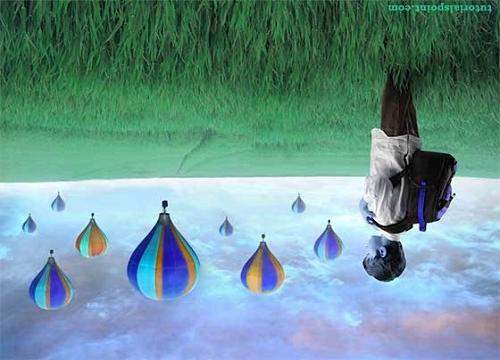- 图像的DIP类型
- 图像的DIP类型(1)
- Java DIP-图像像素(1)
- Java DIP-图像像素
- Java DIP-图像金字塔(1)
- Java DIP-图像金字塔
- Java DIP-灰度转换(1)
- Java DIP-灰度转换
- Java DIP-简介
- Java DIP-简介(1)
- Java 中的云图像转换(1)
- 讨论Java DIP
- 讨论Java DIP(1)
- Java DIP-OpenCV颜色空间转换
- Java DIP-OpenCV颜色空间转换(1)
- dip 编程语言 (1)
- DIP颜色代码转换(1)
- DIP颜色代码转换
- Java 代码示例中的云图像转换
- Java DIP-OpenCV灰度转换(1)
- Java DIP-OpenCV灰度转换
- dip 编程语言 - Python (1)
- Java DIP-添加边框
- Java DIP-添加边框(1)
- Java DIP-增强图像亮度(1)
- Java DIP-增强图像亮度
- Java DIP-开源库(1)
- Java DIP-开源库
- 图像转换(1)
📅 最后修改于: 2020-12-14 05:39:18 🧑 作者: Mango
使用OpenCV可以轻松更改图像的形状。可以在四个方向中的任何一个方向上翻转,缩放或旋转图像。
为了改变图像的形状,我们读取图像并将其转换为Mat对象。其语法如下-
File input = new File("digital_image_processing.jpg");
BufferedImage image = ImageIO.read(input);
//convert Buffered Image to Mat.
翻转图像
OpenCV允许以下三种类型的翻转代码-
| Sr.No. | Flip Code & Description |
|---|---|
| 1 |
0 0 means, flipping around x axis. |
| 2 |
1 1 means, flipping around y axis. |
| 3 |
-1 -1 means, flipping around both axis. |
我们将适当的翻转代码传递到Core类的方法flip()中。其语法如下-
Core.flip(source mat, destination mat1, flip_code);
flip()方法采用三个参数-源图像矩阵,目标图像矩阵和翻转代码。
除了flip方法之外,Core类还提供了其他方法。他们简要描述-
| Sr.No. | Method & Description |
|---|---|
| 1 |
add(Mat src1, Mat src2, Mat dst) It calculates the per-element sum of two arrays or an array and a scalar. |
| 2 |
bitwise_and(Mat src1, Mat src2, Mat dst) It calculates the per-element bit-wise conjunction of two arrays or an array and a scalar. |
| 3 |
bitwise_not(Mat src, Mat dst) It inverts every bit of an array. |
| 4 |
circle(Mat img, Point center, int radius, Scalar color) It draws a circle. |
| 5 |
sumElems(Mat src) It blurs an image using a Gaussian filter. |
| 6 |
subtract(Mat src1, Scalar src2, Mat dst, Mat mask) It calculates the per-element difference between two arrays or array and a scalar. |
例
以下示例演示了如何使用Core类翻转图像-
import java.awt.image.BufferedImage;
import java.awt.image.DataBufferByte;
import java.io.File;
import javax.imageio.ImageIO;
import org.opencv.core.Core;
import org.opencv.core.CvType;
import org.opencv.core.Mat;
import org.opencv.imgproc.Imgproc;
public class Main {
public static void main( String[] args ) {
try {
System.loadLibrary( Core.NATIVE_LIBRARY_NAME );
File input = new File("digital_image_processing.jpg");
BufferedImage image = ImageIO.read(input);
byte[] data = ((DataBufferByte) image.getRaster(). getDataBuffer()).getData();
Mat mat = new Mat(image.getHeight(),image.getWidth(),CvType.CV_8UC3);
mat.put(0, 0, data);
Mat mat1 = new Mat(image.getHeight(),image.getWidth(),CvType.CV_8UC3);
Core.flip(mat, mat1, -1);
byte[] data1 = new byte[mat1.rows()*mat1.cols()*(int)(mat1.elemSize())];
mat1.get(0, 0, data1);
BufferedImage image1 = new BufferedImage(mat1.cols(), mat1.rows(), 5);
image1.getRaster().setDataElements(0,0,mat1.cols(),mat1.rows(),data1);
File ouptut = new File("hsv.jpg");
ImageIO.write(image1, "jpg", ouptut);
} catch (Exception e) {
System.out.println("Error: " + e.getMessage());
}
}
}
输出
当您运行上述示例时,它会将图像名称digital_image_processing.jpg翻转到其等效的HSV色彩空间图像,并使用名称flip.jpg将其写入硬盘。
原始图片

图像翻转
